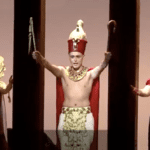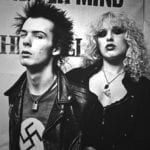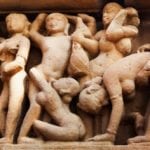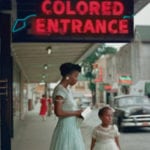 Mysteries
Mysteries  Mysteries
Mysteries  History
History 10 Surprising Stories About the Texas Rangers
 Humans
Humans 10 Philosophers Who Were Driven Mad by Their Own Theories
 Miscellaneous
Miscellaneous 10 Video-Game-Worthy Weapons and Armors from History
 Weird Stuff
Weird Stuff 10 Psychics Who Accurately Predicted Wartime Events
 The Arts
The Arts 10 Pieces of Art Inspired by a Broken Heart
 Health
Health 10 Science Fiction-Sounding New Medical Treatments
 History
History 10 Surprising Facts About the Father of Submarine Warfare
 Space
Space Ten Astonishing New Insights into Alien Worlds
 Weird Stuff
Weird Stuff 10 Bizarre Summer Solstice Rituals Still Practiced Today
 Mysteries
Mysteries Top 10 Haunting Facts About the Ghost Ship MV Alta
 History
History 10 Surprising Stories About the Texas Rangers
 Humans
Humans 10 Philosophers Who Were Driven Mad by Their Own Theories
Who's Behind Listverse?

Jamie Frater
Head Editor
Jamie founded Listverse due to an insatiable desire to share fascinating, obscure, and bizarre facts. He has been a guest speaker on numerous national radio and television stations and is a five time published author.
More About Us Miscellaneous
Miscellaneous 10 Video-Game-Worthy Weapons and Armors from History
 Weird Stuff
Weird Stuff 10 Psychics Who Accurately Predicted Wartime Events
 The Arts
The Arts 10 Pieces of Art Inspired by a Broken Heart
 Health
Health 10 Science Fiction-Sounding New Medical Treatments
 History
History 10 Surprising Facts About the Father of Submarine Warfare
 Space
Space Ten Astonishing New Insights into Alien Worlds
 Weird Stuff
Weird Stuff 10 Bizarre Summer Solstice Rituals Still Practiced Today
Top 10 Iconic Moments From The History Of Music
On 25 March 1983, Michael Jackson was performing his new song ‘Billie Jean’ for the TV programme Motown 25: Yesterday, Today, Forever. Gliding across the stage, he performed his legendary moonwalk to the delight of the live audience. Two months later the rest of the country got to see the special moment when the TV special was broadcast.
What would today’s music be without the influences of boundary-pushing music artists throughout history? Those of us who grew up during the 70s, 80s and even 90s, cannot imagine a world in which there is no David Bowie, Prince, Michael Jackson, Tina Turner or Elvis Presley music.
On this list are just some of the world’s biggest stars and their iconic moments that will live on in the years to come.
Top 10 Iconic Places Pictured From Behind
10 The greatest cultural force in the 20th century
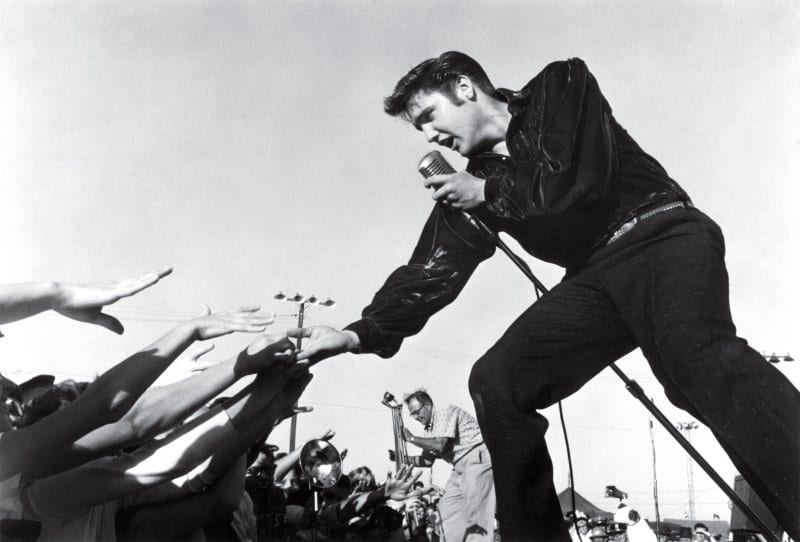
Elvis Presley set hearts aflutter worldwide with his golden voice and sexy moves. Even towards the end of his short life, he still had the ability to draw vast crowds at concerts and mesmerize them with his performances. Composer and conductor of the New York Philharmonic, Leonard Bernstein, called Presley “… the greatest cultural force in the 20th century.” He went on to say that Presley “introduced the beat to everything and he changed everything – music, language, clothes, it’s a whole new social revolution – the 60s come from it.”
This photograph shows Elvis Presley on stage at the Mississippi-Alabama Fair and Dairy Show in 1956. The crowd went wild then and continued to go wild at his future concerts and shows.
9 Moves like Jagger
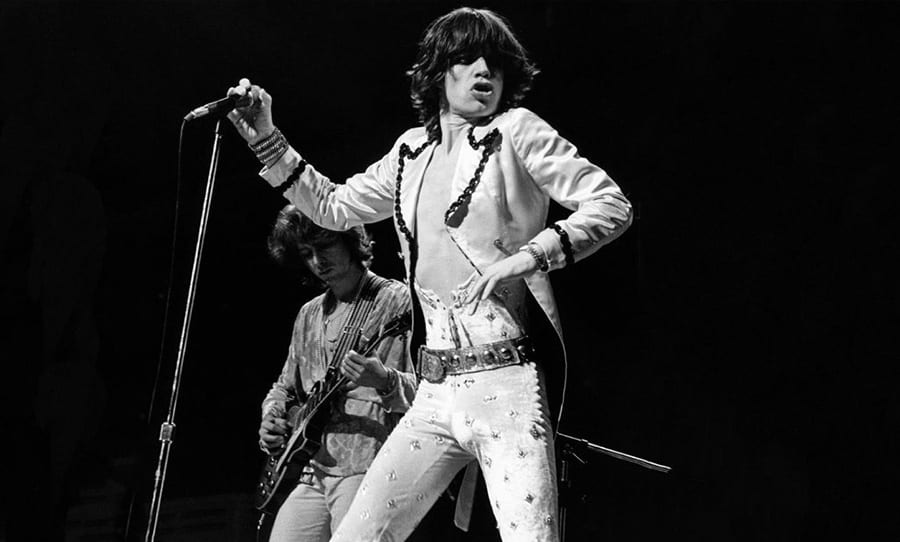
Tina Turner has taken credit for teaching Mick Jagger his infamous dance moves, even though Jagger has never publicly confirmed this and instead credited his own mother with teaching him how to dance. The frontman of The Rolling Stones also credited some of his early moves to James Brown. Jagger strived to be like Brown because they “were both in tune to the rhythms of their music.”
The Rolling Stones was (and still is) a defining force in hard rock and were named second greatest band of all time by Billboard magazine in 2019.
In this photo Jagger is striking one of his signature poses during a Rolling Stones concert at Wembley Empire Pool in 1973. He is wearing one of his most iconic on-stage outfits consisting of a velvet unitard and a tailcoat.
8 The Queen of Soul
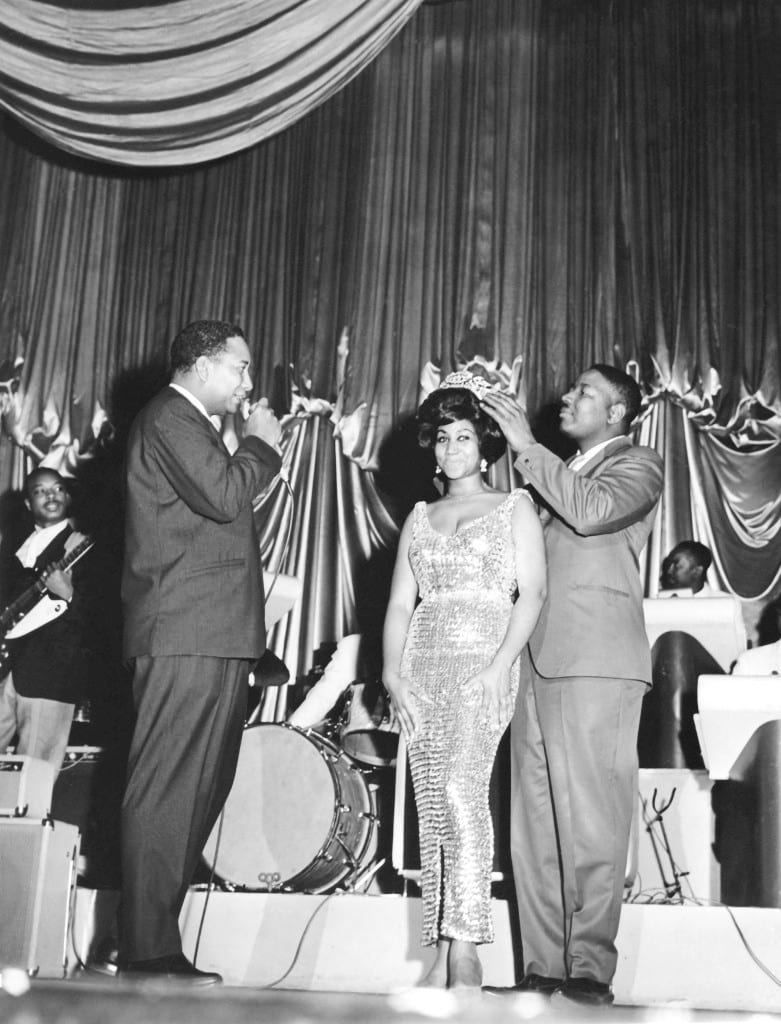
Throughout her illustrious career, Aretha Franklin, rubbed shoulders with a host of other stars including Oprah Winfrey, Diana Ross, Michael Jackson, Stevie Wonder, Mariah Carey, The Rolling Stones, and the list goes on. She was a civil rights activist and donated money for civil rights protests and performed at protests.
Aretha has sold more than 75 million records worldwide and received a multitude of honors, including 18 Grammy awards. She had 20 number one hits on the R&B charts and became the first woman to be inducted into the Rock and Roll Hall of Fame. In 1964 Aretha was crowned ‘Queen of Soul by Pervis Spann, a WVON disc jockey, who placed a crown on her head during a performance at Chicago’s Regal Theatre.
She spoke of this moment in her book ‘Aretha: From These Roots’ saying: “… The only queens I had known of were Dinah Washington and Elizabeth I and II. To be considered worthy of the same title held by Dinah was an honor of the highest order… It was the last thing I expected when he walked out with that crown and actually put it on my head.”
7 The hillbilly Shakespeare

Rufus Payne, an African American blues musician gave Hank Williams guitar lessons and had a huge impact on what Williams’ musical style would become. Williams recorded 35 singles of which 11 ranked number one of the Billboard Country & Western Best Sellers chart. He is regarded as one of the most influential singer/songwriters in history and was given the nickname ‘hillbilly Shakespeare’ in honor of his unique and lingering lyrics.
This iconic photograph depicts Williams’ debut at the Grand Ole Opry on 11 June 1949. After his performance he was encored 6 times and the audience had to be beseeched to stop to allow the rest of the show to continue.
Unfortunately, Hank Williams didn’t have a happy ending and he died at the age of 29 on New Years’ Day 1953 after a long struggle with alcohol abuse and addiction to prescription drugs.
His musical legacy, however, lives on.
6 Eurovision heroes
ABBA won the Eurovision Song Contest in 1974, ensuring Sweden’s first win in the competition and the rest, as they say, is history.
Between 1974 and 1983, the pop supergroup topped charts around the world with songs including Waterloo, Dancing Queen and Mamma Mia. Waterloo is the song that won them the Eurovision crown, while Dancing Queen became the group’s only American number one single.
ABBA’s final performance happened in 1982 and they reunited in 2016.
Top 10 Secrets Of Iconic Hollywood Sounds
5 A song of protest

Like Hank Williams, Jimi Hendrix had a short but extremely influential career. He had only a 4-year run but is still considered one of the best electric guitarists in the history of rock music as put eloquently by The Rock and Roll Hall of Fame who described him as “arguably the greatest instrumentalist in the history of rock music.”
On 18 August 1969, Hendrix performed The Star-Spangled Banner at Woodstock and his performance would later be called the most electrifying moment of the festival.
Wearing bell-bottom jeans, a white shirt and a red headband, Hendrix unleashed his Fender Stratocaster in what could be interpreted as a protest against the government during a time of war in Vietnam.
4 Reginald Kenneth Dwight
Growing up in a house where his father wasn’t at all interested in building a relationship with him, Reginald Kenneth Dwight focused on his junior scholarship at the Royal Academy of Music which he was awarded at the age of eleven. However, he left the Academy before taking the final exams. After his parents’ divorce, his mother married again and in their new home, Dwight wrote several songs that would launch his fantastic career. Dwight legally changed his name to Elton Hercules John on 7 January 1972. He made elaborate costumes a part of his shows and bold eyeglasses became one of his signature fashion pieces. Known for playing the piano, John sometimes also played the guitar as is evident in this rare snap of him doing just that.
Elton John went on to win five Grammy Awards, Five Brit Awards, Two Oscars and two Golden Globes among others and was knighted by Queen Elizabeth II in 1998. One of his most famous songs, Candle In The Wind, was adapted in 1997 for Princess Diana’s funeral and sold more than 33 million copies worldwide.
3 Funny Girl
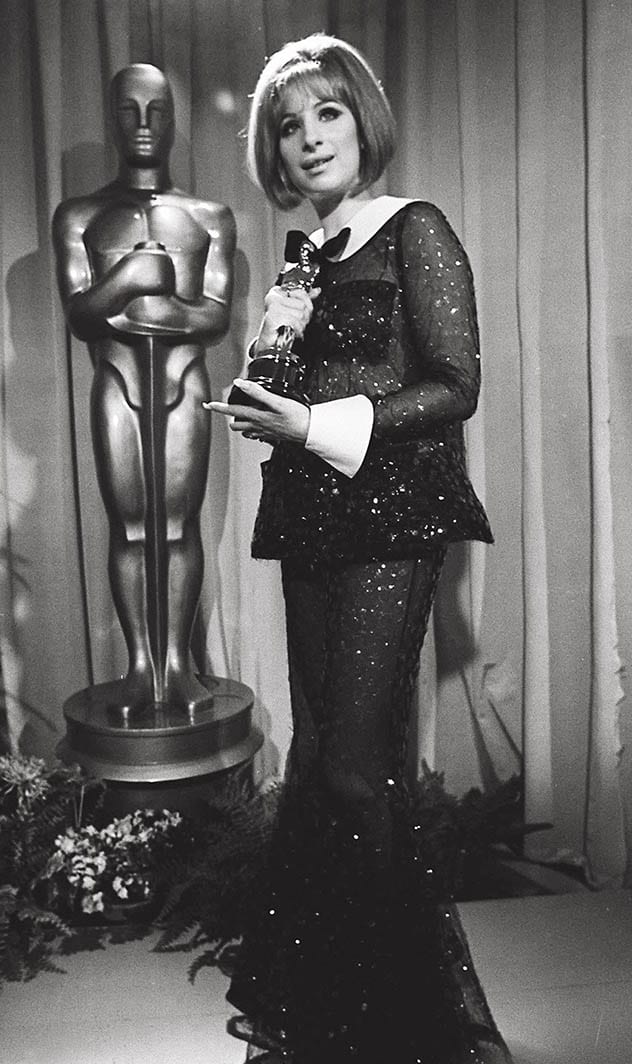
With more than 150 million records sold worldwide, Barbra Streisand is one of the best-selling recording artists of all time. And she is not only a singer, but also an actress and filmmaker. She has won several awards, including 2 Oscars, 10 Grammys and 5 Emmy Awards and became the first woman to write, produce, direct and star in a major film when Yentl was released in 1983. (Link 8)
She won her first Oscar in 1969 for Best Actress in the critically acclaimed Funny Girl, alongside Katherine Hepburn who won Best Actress for The Lion In Winter. Their tie for Best Actress Oscar is one of only 6 ties at the Academy Awards throughout its history.
Barbra picked the less conservative of two outfits for the awards ceremony: a pantsuit sporting plastic sequins and a white collar and cuffs. What she didn’t realize beforehand however, was that when bright stage lights fell over the outfit, it would become practically see-through.
She said afterwards: “I had no idea that when the lights hit the outfit, it would become transparent!”
Barbra won her second Oscar in 1977 for Best Song in A Star Is Born.
2 What a comeback
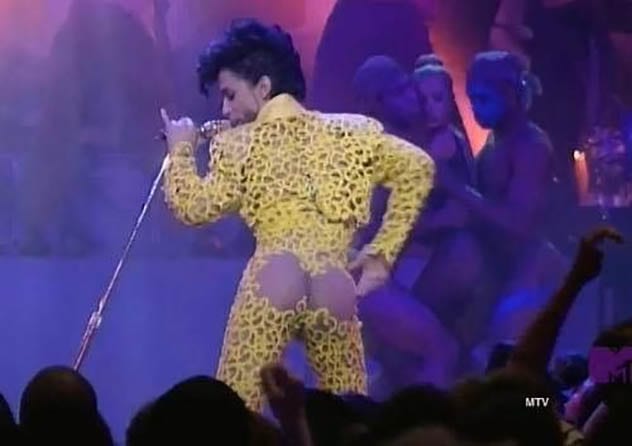
Almost unknown in 1981, Prince was slated to be the opening act for the Rolling Stones. He appeared on stage wearing thigh-high boots, a trenchcoat and bikini briefs. The Stones fans were exceptionally intolerant and started hurling insults, homophobic slurs and even food and drinks. Prince left the stage in tears after 15 minutes.
Fortunately, the star didn’t let this terrible experience dissuade him from pursuing his music career. By the end of the 80s he was one of the most successful artists of that decade and today he is celebrated as one of the best music artists of all time.
By 1991 there was no trace of the humiliation that caused him to flee the stage 10 years earlier. All there was were screaming fans who couldn’t get enough of the star. AT the 1991 MTV Video Music Awards, Prince was performing Gett Off when he turned around and revealed that his butt was covered only by illusion netting.
The incident became known as Prince’s defining VMA moment, even though some fans argued that what the audience saw was flesh-colored fabric and not Prince’s actual behind.
1 Freddie stole the show
In 1984 Bob Geldof and Midge Ure wrote “Do They Know It’s Christmas” after Geldof travelled to Ethiopia and witnessed the ongoing horrors of a famine that had killed thousands of Ethiopians. The proceeds of the song totalled $44 million. However, Geldof wanted to do more, so he came up with the Live Aid benefit concert which was held in 1985. The concert line-up consisted of more than 75 acts including Bryan Adams, Neil Young, David Bowie, Madonna, Sting, Phil Collins, and Santana.
The performances happened at Wembley Stadium in London and at Philadelphia’s JFK stadium and $127 million was raised for famine relief in Africa.
The most memorable moment from the concert, however, was the 20-minute performance by Queen. Freddie Mercury held the audiences’ attention as he and the band powered through “Bohemian Rhapsody”, “We Will Rock You” and “We Are The Champions.” Queen’s popularity was declining at that point, but with that rocking performance the world was reminded just how unique a talent Mercury was..
Top 10 Iconic Behind-The-Scenes Photos From Hit Movies
